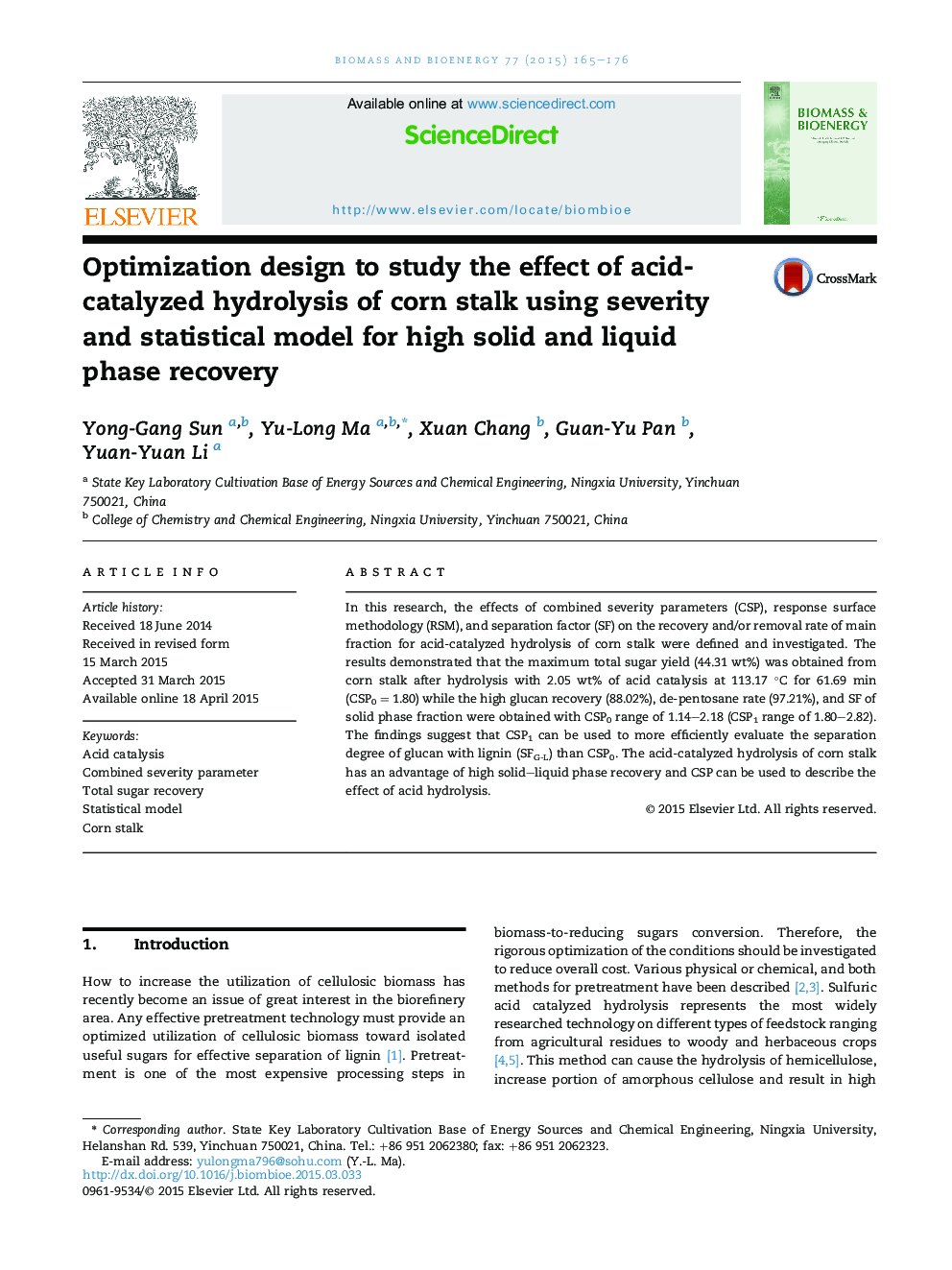| Article ID | Journal | Published Year | Pages | File Type |
|---|---|---|---|---|
| 676777 | Biomass and Bioenergy | 2015 | 12 Pages |
•Operational condition was optimized and evaluated using statistical model and CSP.•High recovery rates and SF of solid component were obtained with increasing CSP.•CSP0 and CSP1 were more sensitive to temperature compared to acid loading and time.•CSP0 and CSP1 equations produced the correlation with the yields of ASL and AIL.•The high glucan recovery (88.02%) and de-pentosane rate (97.21%) were obtained.
In this research, the effects of combined severity parameters (CSP), response surface methodology (RSM), and separation factor (SF) on the recovery and/or removal rate of main fraction for acid-catalyzed hydrolysis of corn stalk were defined and investigated. The results demonstrated that the maximum total sugar yield (44.31 wt%) was obtained from corn stalk after hydrolysis with 2.05 wt% of acid catalysis at 113.17 °C for 61.69 min (CSP0 = 1.80) while the high glucan recovery (88.02%), de-pentosane rate (97.21%), and SF of solid phase fraction were obtained with CSP0 range of 1.14–2.18 (CSP1 range of 1.80–2.82). The findings suggest that CSP1 can be used to more efficiently evaluate the separation degree of glucan with lignin (SFG-L) than CSP0. The acid-catalyzed hydrolysis of corn stalk has an advantage of high solid–liquid phase recovery and CSP can be used to describe the effect of acid hydrolysis.
Graphical abstractFigure optionsDownload full-size imageDownload as PowerPoint slide
